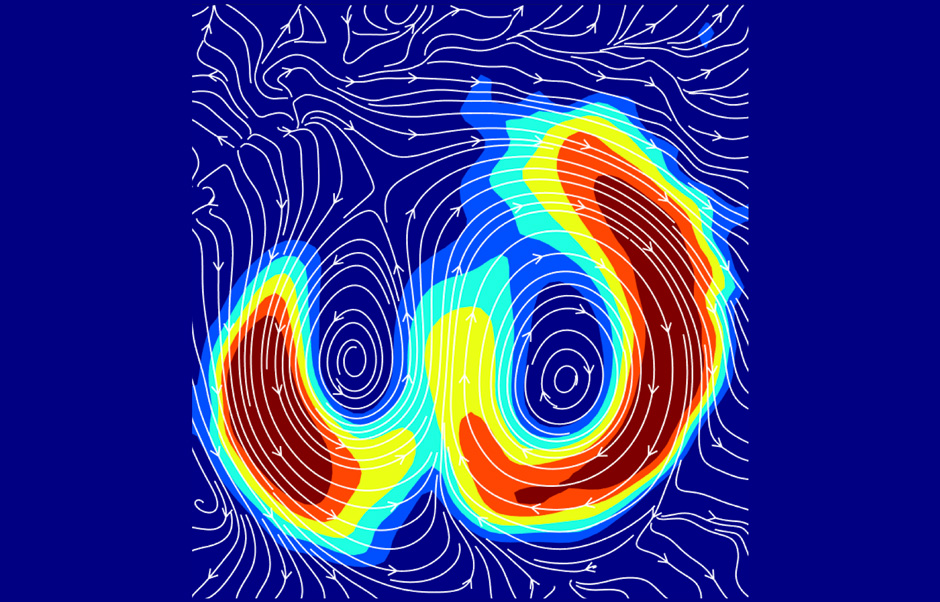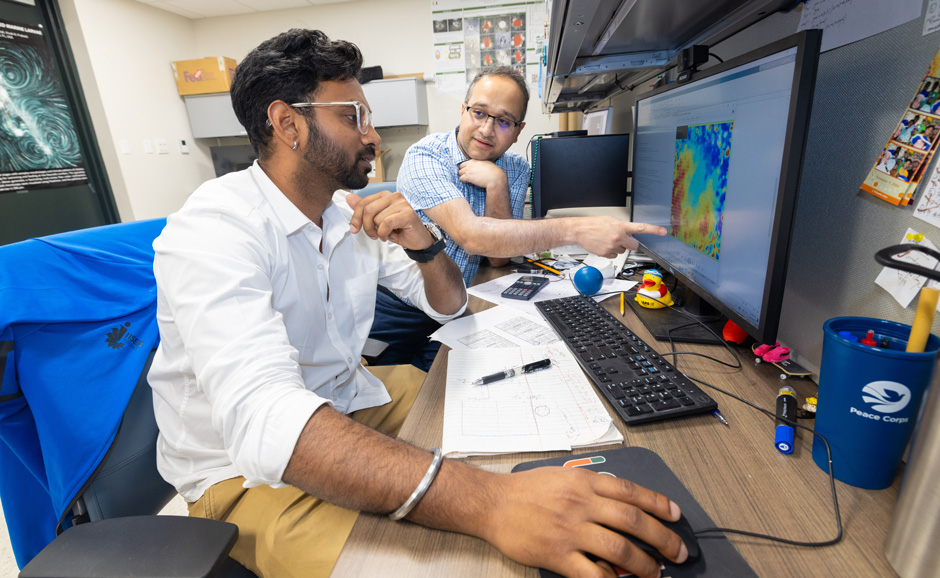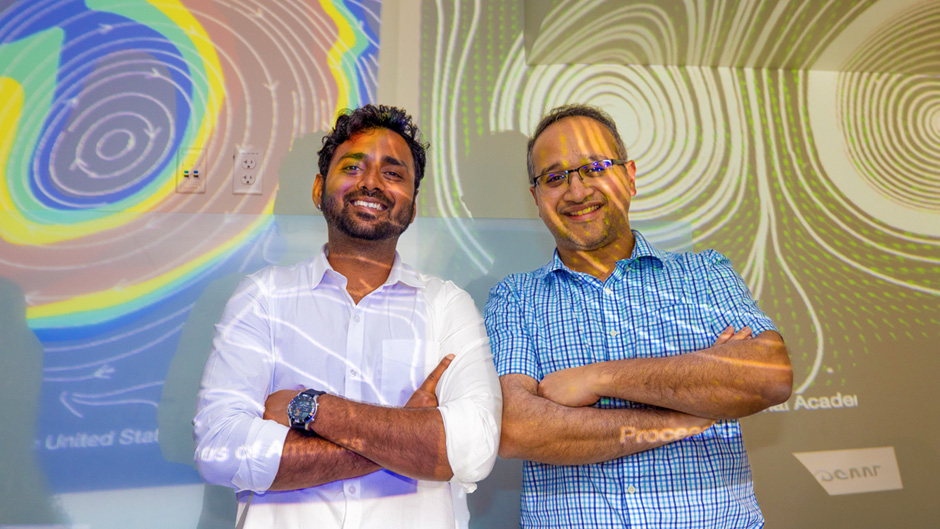On the inside, things are different.
“If you look at our insides, we are not symmetrical—our heart, liver, and stomach are not placed symmetrically,” said Vivek Prakash, assistant professor of physics at the University of Miami College of Arts and Sciences, who specializes in the field of biophysics. “The question we wanted to answer is when does this asymmetry begin?”
This internal left-right asymmetry is believed to begin at the very early stage of development—when a tiny embryo is divided into two parts during a process called gastrulation. This process eventually also helps to form the arrangement of organs inside our bodies.
But exactly how and when this left-right asymmetry begins was still unclear.
To answer this, Prakash and three other collaborators studied chick development using fluorescent microscopes to visualize the movement of cells. They discovered that the physical process of cell motion actually shows asymmetry, while earlier research indicated that this asymmetry was initiated by genetics.
“Our work uncovers important findings about a crucial stage of early animal development that can give important insights into understanding the origin of left-right asymmetry,” added Shubham Sinha, a graduate student in Prakash’s lab.
Their findings shed new light on early development and could apply to many different animals, including humans. As a result, the study was published in the Proceedings of the National Academy of Sciences this week and may help scientists to better understand the very beginnings of left-right asymmetry.

Cellular flows during early chicken development show left-right asymmetry, with a right dominance. The red color shows faster speeds of cell motion, and blue represents slower speeds. Photo: Vivek Prakash/University of Miami.
“Cell movement is an important physical process, and we are seeing that cell movements display left-right asymmetry in chick embryos,” Prakash said. “This is a big change because for many years scientists believed that genes were responsible for giving rise to this asymmetry.”
The research was conducted by Prakash, Sinha, Rieko Asai, a researcher at Kumamoto University in Japan, and professor Takashi Mikawa at the University of California, San Francisco.
Using fluorescent microscopes and live imaging videos, the team studied and quantified cell motion inside dozens of chick embryos. By analyzing the videos—and distilling 10 hours of cell movement into 10 seconds—they observed cell movements flowing in outward circles from the middle of the chicken embryos, and they saw that these movements were larger on the right side than the left side. This offered visual proof of left-right asymmetry, a finding supported by quantitative measurements of the cell speeds. This motion is important for the development of the embryo.
“This discovery is important to better understand human and mice gastrulation in the future and the emergence of birth defects in animals,” Prakash added.



